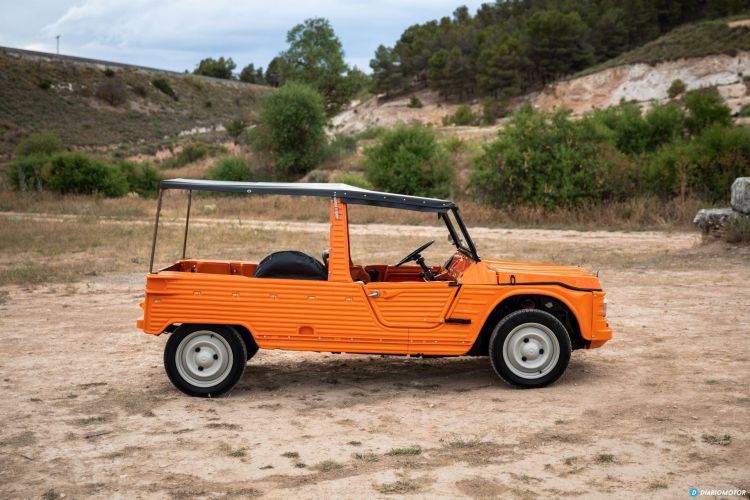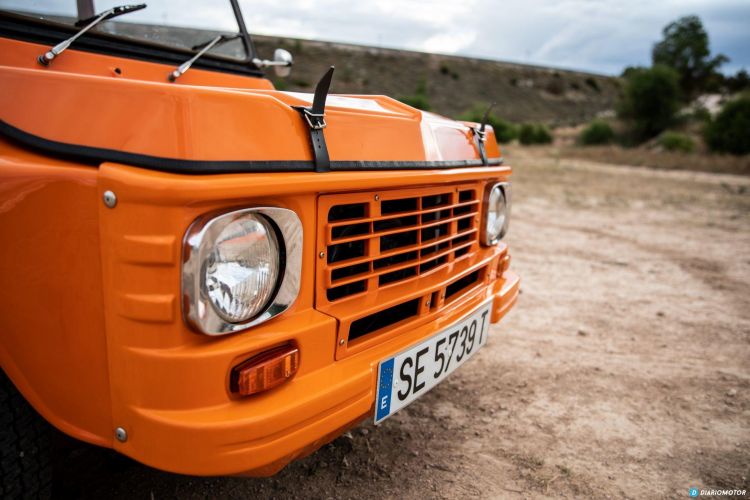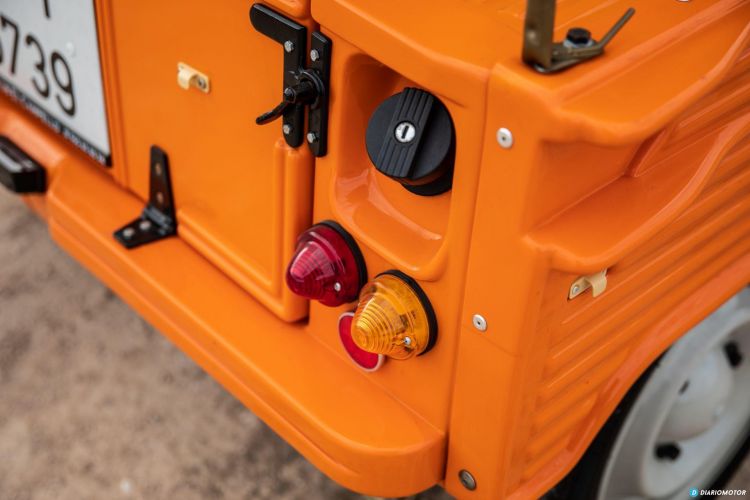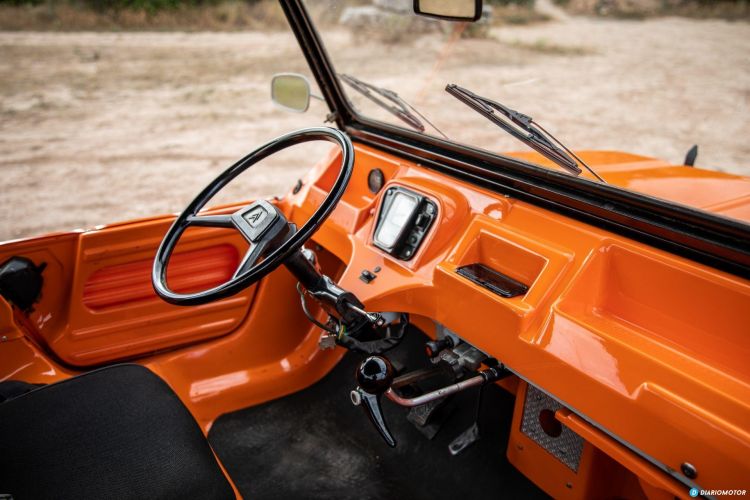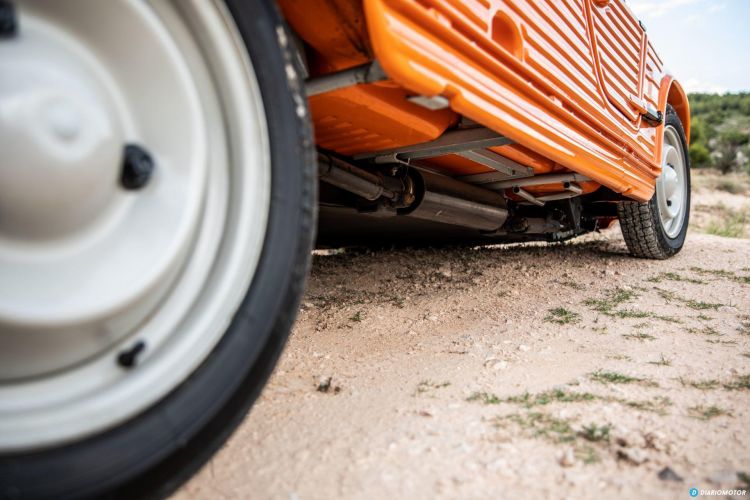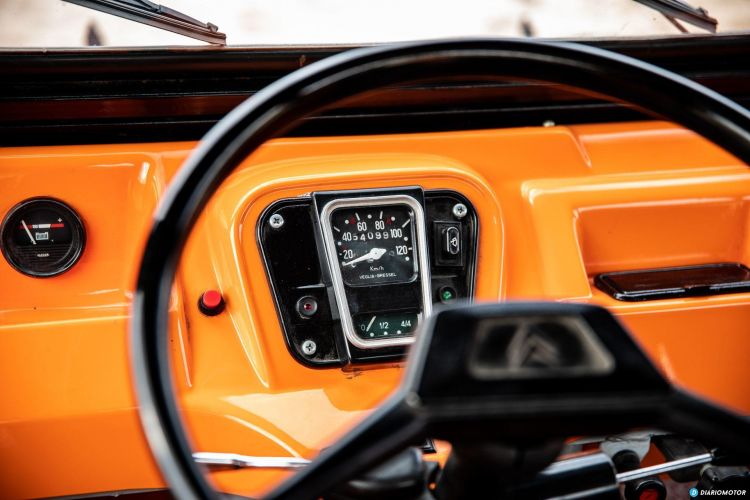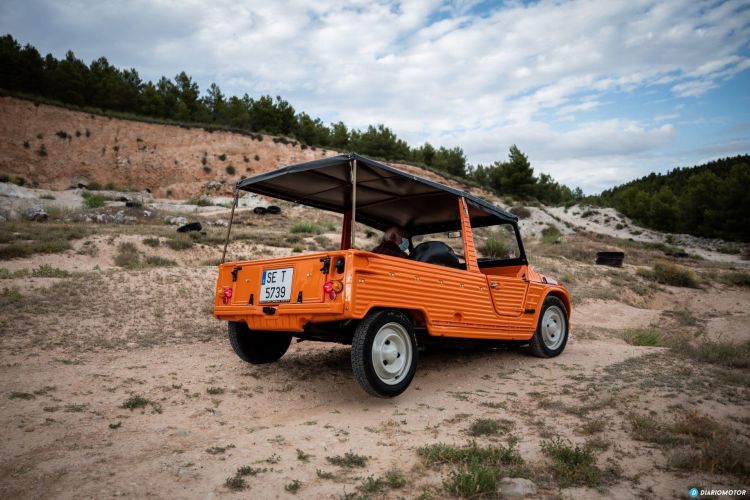There were many variants of the Citroën 2CV. But none was as fun, charismatic and carefree as the Citroen Mehari. It wasn’t a pick-up, it wasn’t an SUV, it wasn’t a van and it wasn’t a convertible… it was all at the same time. In this video we are going to discover all the secrets of this charismatic swiss army knife with wheels and explain to you the great ideas that only a brand like Citroën could come up with. To do so, we are going to use as a model this precious orange Méhari of the year 1979manufactured at the PSA Group facilities in Vigo.
History of the Citroen Mehari
The Citroën Mehari was introduced in 1968. Its development was carried out by a company called SEAB – Société d’Etudes et d’Applications des Brevets. This company, led by a World War II flying ace, pioneered vehicle bodywork using plastic instead of the usual fiberglass. Inspired by the success of the Mini Moke, SEAB evaluated several vehicles before settling on the mechanical base of the Citroën 2CV, simple, cheap and very common in France. The mechanical base was the Dyane 6, and for this reason, it was initially known as the Citroën Dyane 6 Méhari. Although it was SEAB and not Citroën, which designed the Méhari, its construction was carried out by Citroën.
It was presented in full “May 68”. The protests almost prevented its presentation to the press.
Total, 144,953 units were manufactured between 1968 and 1987. The car hardly changed during the 19 years it was on sale, and was even made in Spain: the PSA facilities in Vigo produced some 13,000 Mehari between 1968 and 1980. By the way, Méhari is the word used in the north from Africa and the Sahara to refer to dromedaries. Frugal animals, capable of traveling long distances loaded with packages, but also of standing out in sports competitions. A very appropriate name for this versatile Citroën.
Why did it have a plastic body?
The main peculiarity of the Méhari is its plastic body, mounted on a lightweight tubular structure. It is made of ABS, a thermoformed plastic injected into moulds. The pigment, which gives it colour, is included in the raw material itself, it is not painted afterwards. It is the same resistant plastic of the LEGO blocks, the casing of your television or the mouse of your computer. It is more expensive than polystyrene, but it better supports thermal variations and impacts, making it ideal for demanding use such as automobiles.
Fortunately, there are still clubs and small companies that make replacement parts for your body.
Among its main advantages is very low weight, easy to wash, does not rust, is scratch resistant, and if it is scratched, it is barely noticeable because the material under the scratch is the same. And it returns to the same place after a soft impact. As for the drawbacks, in the face of a strong blow it can break, and if it breaks, the plastic part must be remanufactured – it is not as easily repaired or molded as a sidewalk sheet. Another downside is that while the bodywork doesn’t rust, the chassis it’s mounted on does rust, and it’s a known weak point of the Méhari.
A small brick with wheels
At the design level, the Méhari is not a very inspiring car. The design was not important, it was a simple vehicle for versatility. All in all, with more than 40 years of perspective, the Méhari is loaded with charm. Its headlights or rear lights were recycled from other models of the brand and the corrugation of its body served to give it more rigidity. Live, it impresses how short it is – it measures 3.52 meters long – but also its height of 1.64 meters. The roof of the car is a simple canvas, mounted on a very simple tubular structure.
Aerodynamics was not one of the primary considerations when designing the Méhari.
Is almost a rolling umbrella. The roof is completely removable, as are its doors, the simple transparent plastic covers that act as windows or the central arch. We could turn a Méhari into little more than an open-air rolling chassis. This very direct connection of the passenger compartment with the exterior brings its sensations closer to those of a motorcycle: temperatures, changes in light, smells or bad weather are felt much more directly than in any other car – even than in many other convertibles.
Interior of the Citroen Mehari
Before driving it, we have to explain its interior to you. The first Méhari, because they did not have, did not even have doors. The car was “locked” with a chain, as if it were a fairground attraction. Although the tested unit does have doors, they are flimsy, small, and don’t offer much protection. We have doors, but it’s not that we feel very protected… The driving position is spartan to say enoughIt is not insulated from the outside in any way, and the seat belts you see on this unit were not standard until 1978.
Has the interior become dirty? With a hose it can be washed perfectly.
We have, first of all, a very basic instrumentation, with a speedometer and a fuel level indicator. In this unit we have an electric windshield washer, quite a luxury for the time. Beyond the classic levers for indicators or headlights, a series of hatches channel the air heated by the engine – that no exhaust gases, logically – to the passenger compartment as a heater, and a large lever acts as a handbrake. A small roulette serves to regulate the height of the headlights, a detail common to all 2CVs.
The rear seats are accessed as best as possible, although there is a small “step” outside. The rear seats are a simple bench, for two people, sharing a place with the spare wheel and without a seat belt. The genius of these squares is that they are collapsible, and remain completely flush with the loading surface. A 1.6 square meter loading area, completely regular and with privileged access, thanks to a tailgate similar to that of a pick-up. And then we talk about modularity in modern cars.
The Mehari’s load capacity is 400 kilos, a very high figure if we consider that it only weighs 525 kilos.
Analysis of Méhari’s suspension
The Citroën Méhari is an SUV. But an SUV in the best sense of the word: It was designed to cross all types of terrain, just like the Citroën 2CV on which it was built. The Méhari is more of an SUV than many SUVs: it has a ground clearance of 18 cm and impressive wheel articulation, thanks to its four-wheel independent suspension. Its suspension scheme is the same as that of the 2CV, with a great predictive suspension, articulated in two bottles with springs that interconnect the front and rear axle.
To show you his articulation and get him to raise his leg, we had to put him in the deepest dubbie on the circuit. The owner of the Mehari was encouraged to overcome some simple dubbies, showing that a classic from more than 40 years ago dares with everything. In the images on the screen you can see the tremendous suspension articulation, and how it overcomes them with ease and without any inertia. Between the years 1979 and 1983 a 4×4 version was produced. Only 1,231 units were made, and today, they are extremely sought after.
Our Méhari is not a 4×4, which would have a reduction gear and even a rear differential lock.
Mechanics of the Citroën 2CV
The mechanics of the Citroën Méhari is the same one that we find in a 2CV6 or a Dyane. It is an air-cooled, twin-cylinder boxer engine with a displacement of 602 cubic centimeters. It develops a “whopping” 32.8 hp, fed by a double-barrel carburettor. It passes its power to the front axle, through a manual four-speed manual gearbox. It is a very slow car: does 0 to 100 km/h in 44 seconds, or in 24.5 secondsdepending on which source you look at. Reaching a top of 108 km/h in a tent on wheels must be terrifying.
An interesting detail: its front inboard brakes were already disc brakes, as this was the latest evolution of the car. If you want more details about the mechanics of the Méhari, we encourage you to read our Citroën 2CV test, and the video published in Diariomotor about it.
At the wheel of the Citroën Méhari
Ultimately, the Citroën Méhari behaves like a 2CV. It is, perhaps, somewhat more agile thanks to its greater lightness, as long as you don’t put fourth gear, designed solely for flattening – cancels any hint of response from the engine. Like the 2CV, it walks very little, but great speed is not necessary to enjoy driving. There is no insulation, the engine is tremendously loud and everything creaks, but all those imperfections give it unparalleled character and charm. Because in truth, we go in complete connection with nature.
The changes in temperature, the weather, the smells, the dust… it is a primary experience, a 100% analog experience. Although the tremendous wobbles of its bodywork are still present in curves and on asphalt, On rough or rough roads, the Méhari shines, isolating occupants from potholes and floating over them, thanks in large part to its lightness. In summary, it is an ideal car to go to the beach, enjoy it on a farm or use it as a weekend car. A car without pretensions and without complexes. A fascinating car.
conclusions
The Citroën Méhari has proven to be a versatile car and much more innovative than it may seem at first glance. The Méhari took the flexibility afforded by the Citroën 2CV platform to another level and demonstrated that it was possible to completely change the character of the car, without altering its original essence or its mechanical scheme. If you like Méhari, know that You can buy a good second-hand unit for around 12,000 euros – It has become very expensive. But if you want to buy an exclusive 4×4 version, its price can be multiplied by almost five or six, since its production was very low.

